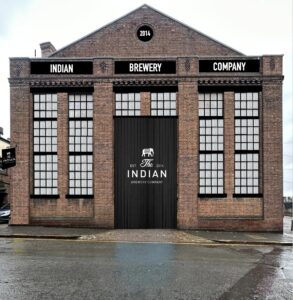Due to the current challenges facing the brewing industry there are a range of tools you can utilise to get the most from your ingredients and equipment, and ultimately save money, explains Alix Blease from Lallemand.
Brewing beer, in its current form, faces sustainability challenges. In today’s economic and environmental landscape, extracting the most value from your ingredients and brewing equipment is crucial.
Without purchasing equipment, process aids and yeast nutrients are two solutions you can incorporate into your brewing process to improve beer quality and maximise capacity thereby boosting profitability.
By increasing packaged volume per brew, optimising fermentation tank capacity, and reducing tank residency time, you can make your brewing process more sustainable.
Process aids are a broad category of products; from clarifying agents to stabilisation products. Which products should you be considering using in your brewery to save time and therefore money?
Starting with the brew day; CompacCG. These carrageenan tablets or granules are used in the kettle to remove the soluble protein from the wort, namely proline-rich haze forming proteins.
Using CompacCG will reduce haze in the finished beer and improve hot-break protein compaction; therefore increasing your kettle yield.
A word of warning however, optimisation is key! If too much carrageenan is added then you can get increased losses further down the process.
It is important to optimise CompacCG additions for each beer brewed, as well as twice a year when the malt season changes. However it is possible to continually monitor the efficacy of CompacCG.
All brewers take a sample from the fermenter after transfer to measure starting gravity and pH. Instead of just throwing that sample away; take the sample in a transparent measuring cylinder and leave it overnight, the following day note how much protein settles in the bottom of the cylinder. Ideally the amount should be no more than 5% of the volume.
The wort should be bright and have a compact sediment. If you see any changes… re-optimise!
To maximise the capacity of existing vessels you can utilise Foamsol. When used in the kettle it keeps foam from forming during the boil.
This means the kettle volume can be maximised and the risk of boil-over is reduced thus improving safety in your brewery.
It may seem counterintuitive to use antifoam in a fermenter, but when added at this point Foamsol can actually improve the head retention in your beer. Foamsol will reduce the krausen produced by 15-20%, meaning the foam-positive proteins will remain within the liquid.
A reduction in krausen will also reduce the demand on your CIP. Iso-alpha-acids (which also contribute to foam stability) are hydrophobic, and therefore reducing the krausen will also minimise the loss of IBUs during fermentation, without Foamsol these losses can be as high as 20%.
Yeast can also be lost via over-foaming in FV, therefore Foamsol can lead to more consistent fermentation results.
Yeast nutrients enhance fermentation performance and accelerate product throughput. They are especially important when brewing beers with high levels of adjuncts, like stouts, as well as beers with high levels of alcohol.
One of the problems with adding high levels of adjuncts is that the wort created can be very nutritionally poor for yeast; which can lead to stuck fermentations and the production of off-flavours.
Yeastlife Extra contains amino acids, minerals, vitamins and sources of both organic and inorganic nitrogen; this all-round nutrition ensures healthy yeast at every generation, thus minimising off-flavours, reducing diacetyl faster and generally promoting a more efficient fermentation.
To further decrease tank time and therefore save money, ALDC can be added at the start of fermentation to completely bypass the formation of diacetyl by yeast. Servomyces™ is a single-strain brewing yeast enriched with zinc which can be used as a biological yeast nutrient.
This cellular-zinc is more bioavailable to your chosen brewing yeast during fermentation than mineral zinc.
The addition of zinc can reduce fermentation times, improve yeast sedimentation, improve repitchability and since zinc is necessary as an enzymatic cofactor in the last step of alcohol production, it is highly encouraged to use Servomyces™ for high gravity fermentations.
When you have maximised your vessel capacity and sped up your fermentation, the final stage of the process is to maximise the amount of beer in your tank which is package-able thus reducing your overall losses.
Protosol is a colloidal silica-sol fining agent which promotes the settling of proteins and other solids from your beer. Optimisation is required, as the Protosol effectively fines beer at very low addition rates.
This means you can increase the throughput of your brewery without the need for investment in additional tank or centrifuge capacity.
Protosol also reduces the chance of chill haze forming in the packaged beer.
Using process aids and yeast nutrients can increase efficiencies, maximise yields, decrease fermentation times and improve overall product quality and consistency.
Due to the current challenges facing the brewing industry utilising these tools is vital to get the most from your ingredients and equipment, and ultimately save money.









